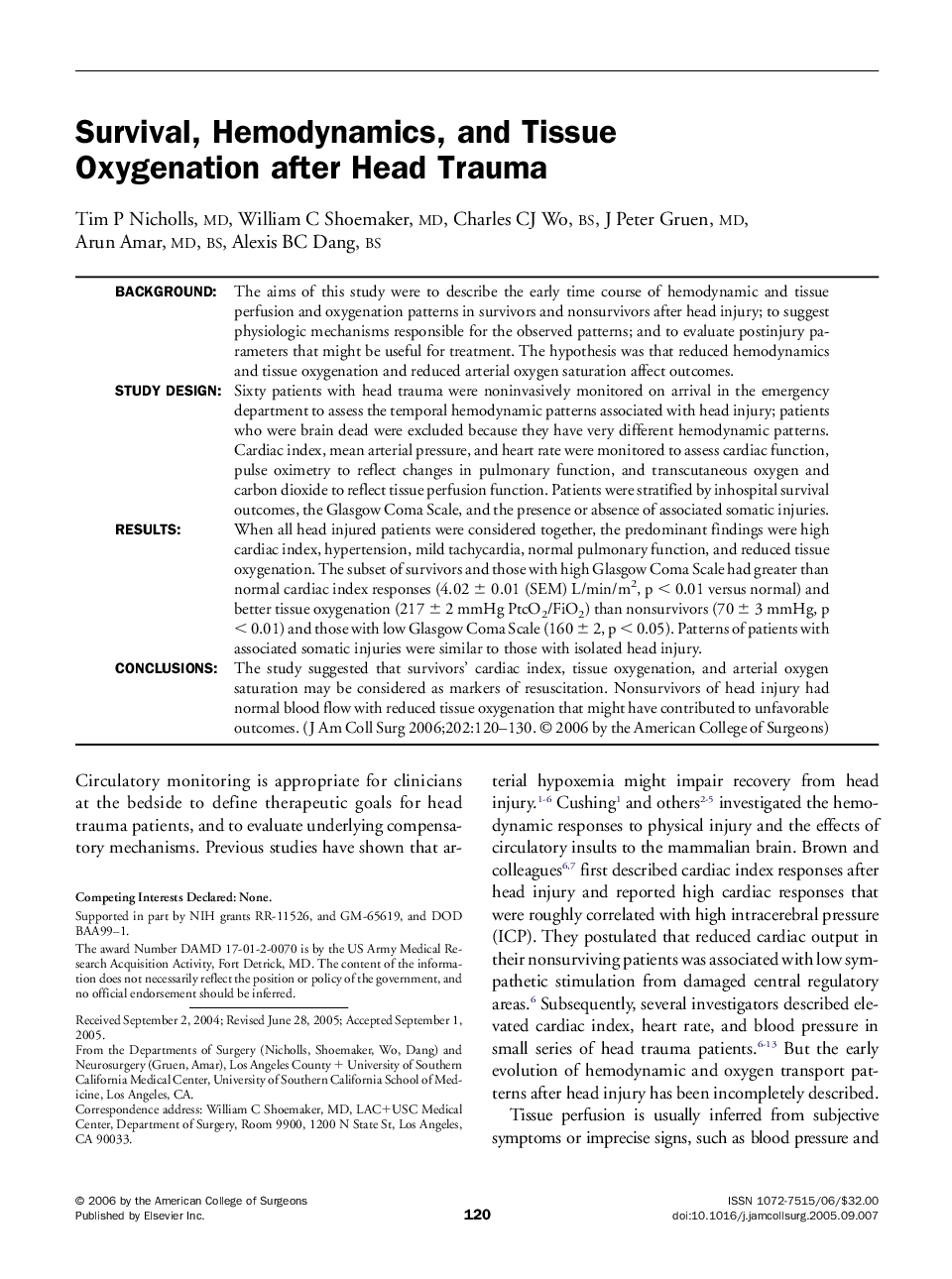| کد مقاله | کد نشریه | سال انتشار | مقاله انگلیسی | نسخه تمام متن |
|---|---|---|---|---|
| 4294684 | 1612343 | 2006 | 11 صفحه PDF | دانلود رایگان |

BackgroundThe aims of this study were to describe the early time course of hemodynamic and tissue perfusion and oxygenation patterns in survivors and nonsurvivors after head injury; to suggest physiologic mechanisms responsible for the observed patterns; and to evaluate postinjury parameters that might be useful for treatment. The hypothesis was that reduced hemodynamics and tissue oxygenation and reduced arterial oxygen saturation affect outcomes.Study designSixty patients with head trauma were noninvasively monitored on arrival in the emergency department to assess the temporal hemodynamic patterns associated with head injury; patients who were brain dead were excluded because they have very different hemodynamic patterns. Cardiac index, mean arterial pressure, and heart rate were monitored to assess cardiac function, pulse oximetry to reflect changes in pulmonary function, and transcutaneous oxygen and carbon dioxide to reflect tissue perfusion function. Patients were stratified by inhospital survival outcomes, the Glasgow Coma Scale, and the presence or absence of associated somatic injuries.ResultsWhen all head injured patients were considered together, the predominant findings were high cardiac index, hypertension, mild tachycardia, normal pulmonary function, and reduced tissue oxygenation. The subset of survivors and those with high Glasgow Coma Scale had greater than normal cardiac index responses (4.02 ± 0.01 (SEM) L/min/m2, p < 0.01 versus normal) and better tissue oxygenation (217 ± 2mmHg PtcO2/FiO2) than nonsurvivors (70 ± 3 mmHg, p < 0.01) and those with low Glasgow Coma Scale (160 ± 2, p < 0.05). Patterns of patients with associated somatic injuries were similar to those with isolated head injury.ConclusionsThe study suggested that survivors’ cardiac index, tissue oxygenation, and arterial oxygen saturation may be considered as markers of resuscitation. Nonsurvivors of head injury had normal blood flow with reduced tissue oxygenation that might have contributed to unfavorable outcomes.
Journal: Journal of the American College of Surgeons - Volume 202, Issue 1, January 2006, Pages 120–130